|
This October, as summer turns to fall and the days start getting shorter, we sometimes find ourselves with opportunities to reflect on some of life’s bigger questions. I often find myself this season asking deep questions on a nice walk outside while admiring the beauty of nature. A lot of times, these big life questions usually involve prayer, discernment, and looking to role models. When I sat down to look at the saints whom we celebrate this October, I realized that many of them had to face similarly tough life questions. The popes, young people in the Church, and martyrs we celebrate this October can help us grow in our own faith journey. Pope Saints Next week, we will celebrate two saints who were popes, albeit at vastly different times. On October 14th, we will celebrate the feast of St. Callistus I (also know as Callixtus I). For many, he is probably one of the lesser-known pope saints. He was the 16th pope and had to deal with great division in the Church. He was able to navigate the Church through many doctrinal controversies through these turbulent times and was martyred around the year 222. Similarly, St. John XXIII navigated through many challenging questions in the Church when he opened the Second Vatican Council in 1962. It was through much prayer and discernment that both popes were able to guide the Church out of murky waters. Later this month, we will celebrate Pope St. John Paul II. One of my favorite John Paul II quotes epitomizes the courage he calls all of us to in living out our faith: “Do not be afraid. Do not be satisfied with mediocrity. Put out into the deep and let down your nets for a catch.” Saints who had an impact in their youth Already this month, we have celebrated two saints who had a major impact on the Church while in their youth: St. Thérèse of Lisieux and St. Francis of Assisi. St. Thérèse, who died at 24, was known for her life of fervent prayer. She was a cloistered Carmelite nun whose prayer was not focused on herself, but on the whole world. She is known as one of the patron saints of missionaries even though she lived as a cloistered nun. St. Francis of Assisi also had a huge impact on the Church while still young. St. Francis was in his 20s when he heard God’s call in the chapel at San Damiano, but it took him time and further prayer to realize God’s true calling for him. St. Francis’ perseverance in the faith and continual discernment of God’s call, even in times of confusion, inspire me. Bl. Carlo Acutis, beatified just last year, also positively impacted the Church in his youth. Bl. Carlo was an amateur computer programmer who died in 2006 at the age of 15. He used his passion for computers to create a website documenting Eucharistic miracles across the world. Martyrs from all ages Throughout the rest of the month, we will celebrate the feast days of martyrs from all time periods in the Church. This includes the memorial of two Apostles: Sts. Simon and Jude. While not much is known about the lives of Sts. Simon and Jude, it is known that they both were killed for their faith. Also martyred in the time of the early Church was St. Ignatius of Antioch. He is known for his incredible writings on Christology. St. Denis was also a martyr in the time of the early Church. Many portrayals of St. Denis will show him holding his head in his arms because after his was martyred, legend has it that he held his head and shared Christ with those who killed him. On October 19th we will celebrate Sts. John de Brebuf and Isaac Jogues, the patron saints of North America. They were killed in the 17th century while ministering to the Iroquois. Even though they had previously been captured and knew that they could be killed, they placed all of their trust in God and continued their missionary work. Throughout the rest of this October, let us pray for the intercession of these saints in helping us be courageous in prayer and discerning God’s continuing will for us. To learn more about the saints, visit our Catholic Feast Days Website by clicking here. To view a calendar of the feast days in October, and each month, click here.
0 Comments
9/7/2021 “Whoever loses his life for my sake will find it”: Proclaiming Christ’s Challenging Call to LoveRead Now
“Then Jesus said to his disciples, ‘Whoever wishes to come after me must deny himself, take up his cross, and follow me. For whoever wishes to save his life will lose it, but whoever loses his life for my sake will find it’” (Mt 16:24-25).
This summer, I’ve been blessed with the opportunity to work as an intern for the Catholic Apostolate Center and collaborate on several catechetical projects with other staff members there. One of these projects was the creation of a new version of From Practicing Catholics to Apostles on Mission, a faith formation course for those who want to delve more deeply into their faith and become more actively involved in the Church. Since many of the program’s participants are young adults, drafting lessons for this course allowed me to reflect on the unique opportunities and challenges that come with speaking to young adults about the Faith. This task always involves a special focus on presenting Church teaching in a way that is clear, approachable, and attractive. But with this task comes a special challenge: how can we avoid the temptation to “water down” the faith or to omit or sugarcoat its more difficult truths? How can we imitate the most perfect preacher, who stated plainly: “Take up your cross and follow me” (Mt 16:24)? One of the Apostles on Mission sessions on which I worked focuses on the universal call to holiness. It seems to me that this teaching is one that we must take care to proclaim in its fullness, especially when speaking to young people: “The Lord Jesus, the divine Teacher and Model of all perfection, preached holiness of life to each and every one of His disciples of every condition…Thus it is evident to everyone, that all the faithful of Christ of whatever rank or status, are called to the fullness of the Christian life and to the perfection of charity” (Lumen Gentium 40). This message shatters the common assumption that holiness is attainable by only a few individuals who perform extraordinary works. It reveals that holiness consists instead in the “perfection of charity” and thus is truly possible for everyone, because although we cannot all accomplish great or miraculous deeds, we can all act with great love. Proclaiming this universal call to holiness is particularly important because—while we hear the commandments over and over—"Love the Lord your God with all your heart…Love your neighbor as yourself”—a very subtle but serious temptation can creep in. Namely, we can be tempted to love only when it is easy, when we find the other person agreeable, when we think they deserve it. But in fact, the perfect love that Christ commands is often difficult. It is difficult to love God daily by resisting temptation, practicing self-denial, and committing ourselves to regular prayer. It is difficult to love our neighbor on a daily basis by treating them with patience, forgiving their faults, and making a generous gift of ourselves to them. Pope St. John Paul II summarized it well in his address to the young people of Boston: “Real love is demanding. I would fail in my mission if I did not clearly tell you so. For it was Jesus—our Jesus himself—who said: ‘You are my friends if you do what I command you’ (Jn 15:14). Love demands effort and a personal commitment to the will of God. It means discipline and sacrifice, but it also means joy and human fulfillment” (Holy Mass on Boston Common, 1979). St. John Paul II not only acknowledges the difficulty of Christ-like love, he also emphasizes that he has a duty to proclaim this difficulty to the Church. He recognized that if we are not warned that “real love is demanding,” we will inevitably discover this reality through our own experience. And if we are not prepared for difficulty, one of two tragic results will likely occur. Finding love demanding, we may be tempted to believe that Jesus didn’t really mean “Be perfect, just as your heavenly Father is perfect” (Mt 5:48) and might ease up and only love when it is easy. Alternatively, we might be tempted to give up in despair, like the rich young man of the Gospel who was taken aback by Jesus’ demanding invitation and “went away sad” (Mk 10:22). Although we must proclaim to young people the difficulty of what Jesus commands, we can also provide them with the hope that enables all Christians to rise to the challenge that lies before them. The first hopeful reminder is this: God is the one who sanctifies us, who always gives us the grace we need to fulfill his call. Cooperating with this grace does require that we are willing to say “yes” to the daily opportunities to undertake the difficult work of loving. But the further hopeful news is that God generously provides hundreds of these opportunities every day. As Pope Francis illustrates in his apostolic exhortation, Gaudete et Exsultate: “This holiness to which the Lord calls you will grow through small gestures. Here is an example: a woman goes shopping, she meets a neighbour and they begin to speak, and the gossip starts. But she says in her heart: ‘No, I will not speak badly of anyone.’ This is a step forward in holiness. Later, at home, one of her children wants to talk to her about his hopes and dreams, and even though she is tired, she sits down and listens with patience and love. That is another sacrifice that brings holiness. Later she experiences some anxiety, but recalling the love of the Virgin Mary, she takes her rosary and prays with faith. Yet another path of holiness. Later still, she goes out onto the street, encounters a poor person and stops to say a kind word to him. One more step.” A third word of hope: Every time we take one of these “steps”—loving even when it is hard—we train our heart, like runners training for a marathon. With each step, our heart grows stronger, and it becomes easier to love the next time. One more message of hope can be found at the end of St. John Paul II’s words that I quoted before: “[Love] means discipline and sacrifice, but it also means joy and human fulfillment” (my emphasis). This message was closely echoed by another great saint of modern times: St. Teresa of Calcutta. She wrote: “We should ask ourselves, ‘Have I really experienced the joy of loving?’ True love is love that causes us pain, that hurts, and yet brings us joy. That is why we must pray and ask for the courage to love.” When we consider the words of both saints, there initially seems to be a contradiction—how can love cause both pain and joy? But this is ultimately the same paradox that lies at the heart of the Gospel: Christ promises that only he who “loses his life for my sake will find it” (Mt 16:25)—that is, only if we “lose” our life in self-giving can we find lasting fulfillment in this life and eternal happiness in the next. It takes courage and great faith to believe in this promise of Christ, but there are two places we can find evidence to support it. The first is in the witness of St. John Paul II and St. Teresa of Calcutta themselves, along with the countless other saints whose lives witnessed to the truth of their words. These men and women loved with total generosity even when it was difficult; they faced many additional sufferings, and yet they were filled with joy—a joy so radiant and constant that it could not have been a mere appearance. We can also find evidence in our own experience that proves the opposite side of this truth: when we have tried to fill our hearts and lives with things that aren’t God, we have all experienced how quickly happiness flees and gives way to emptiness and sorrow. By witnessing the joy of the saints and recalling our own sorrow when we deviate from the path they trod, we can trust that over time, as we continue the demanding work of striving to love as Christ loved, He will gradually reshape our hearts and help us experience the joy that sacrificial loving brings. In summary, when we share the Gospel with young people, we must take care to speak the fullness of the truth and tell them of both the joy and suffering that accompanies the lives of those who follow Christ. By doing so, we help them avoid the fate of those who excuse themselves or fall into despair when they feel the weight of the cross. But even more, doing so helps them find the narrow path that leads to the life they most desire, “life in its fullness,” as St. John Paul II describes: “Jesus does not ask us to give up living, but to accept a newness and fullness of life that only He can give. The human being has a deep-rooted tendency to ‘think only of self,’ to regard one’s own person as the center of interest and to see oneself as the standard against which to gauge everything. One who chooses to follow Christ, on the other hand…looks on life in terms of gift and gratuitousness, not in terms of conquest and possession. Life in its fullness is only lived in self-giving, and that is the fruit of the grace of Christ: an existence that is free and in communion with God and neighbor” (Message for World Youth Day XVI, 2001). It has been a great gift to collaborate with the Catholic Apostolate Center in their efforts to help others recognize and respond to God’s call to holiness, to the fullness of life. May all of us—of every age—heed this call. May we have the courage to proclaim the fullness of the truth, the strength to love when it is difficult, and the confident hope that doing these things will bring the profound peace and joy that we seek.
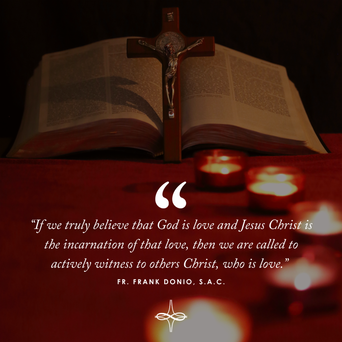 Advent is a time of active waiting. That might seem rather strange and even contradictory. Some see Advent as a passive period, a time of waiting for Christmas to come. Advent is hardly a time for passivity. The first half of Advent is focused on the coming of Jesus Christ at the end of time and our active waiting for that. What type of activity? We are called to co-responsibility in the mission of Christ and his Church to bring about the Kingdom of God. This Kingdom is not about power and control, but about love, particularly “social love,” a term used by St. John Paul II in his first Encyclical Letter, Redemptor Hominis (15). It is a type of love that transforms the world to Christ. Pope Francis in his new Encyclical Letter, Fratelli Tutti, teaches that “‘Social love’ makes it possible to advance toward a civilization of love, to which all of us can feel called.” (183). If we truly believe that God is love and Jesus Christ is the incarnation of that love, then we are called to actively witness to others Christ who is love (1 John 4:7-21). This love can transform our world and help to bring about the Kingdom of God while we wait for Christ to come again at the end time. May we enter Advent as a time of active waiting lived in love. May the Charity of Christ urge us on!
I stumbled into entrepreneurship in 2016 after studying philosophy, theology, and anthropology for my undergraduate and graduate degrees. Ending up in the business world felt like a long and winding road filled with sleepless nights, much discernment, and many conversations. In the few years after graduating from college, like many early 20-year-olds, I felt untethered and unsure of my direction. What was my direction in life? What was my mission? How did the Lord want me to use my gifts and talents to serve him? At the time, I attempted to answer these questions by searching for women who had accomplished work in the same field that I was going into. I spent endless hours looking for women on LinkedIn in their 40s and 50s who had achieved a successful career while also being married and raising a family. My search was futile. Although I did find a couple of single Catholic female entrepreneurs to connect with, for years, I felt like I was “making it up as I went along”: trying to weld married and family life while scaling a business, hiring and firing employees, serving clients, and trying to keep God in the center of it all. Every vocation for women within the Church is beautiful and worthy, but being a Catholic entrepreneur in particular has been challenging. Although I have developed some great friendships with secular business women, I can’t connect with them fully about discerning business decisions with my spiritual director or praying a daily rosary for my employees. Within the Catholic sphere, I can’t completely relate to stay-at-home mothers or women who are working a 9-5. I desperately needed a mentor but could not find one who was willing to devote time and effort to my growth. Speaking to women’s particular vocation, Pope John Paul II in Mulieris Dignitatem spoke to every woman’s calling to love: “The moral and spiritual strength of a woman is joined to her awareness that God entrusts the human being to her in a special way. Of course, God entrusts every human being to each and every other human being. But this entrusting concerns women in a special way - precisely by reason of their femininity - and this in a particular way determines their vocation”. Here, Pope John Paul II illuminates women’s ability to “receive the other” because of the design of their femininity. Through their motherhood, spiritual and physical, women are capable of receiving, knowing, and loving others in a manner different to men. God entrusts humanity to women, knowing that she is uniquely made to care for those around her. This act of entrusting carries through to every aspect of our modern world, including the sphere of business. Just as a mother nurtures her family, every woman in business has the mission to nurture those in her care: her clients, her employees, her colleagues. In a special way, Catholic women entrepreneurs co-create with God to create something out of nothing. Every woman-owned-business begins as merely a dream placed on her heart. Her mission is to share with the world her services and products—glimpses of God’s own heart and a genius that only she can share. This is why mentorship is essential: so that women who are called to practice business can find and live out their own unique mission in this world. Women are called to cultivate the gifts and talents of others, to foster the dreams that only they can bring forth. A mentor provides guidance, critique, and reassurance as a young person matures. This is crucial to the formation of any woman, entrepreneur or not, but also fulfills the role of each Christian to evangelize the world. Without this relationship, one might not have the tools and resources to realize their full potential. By fostering the gifts and talents of others through mentorship, women are living out their feminine genius. My Co-Founder, Emma Moran, and I created Catholic Women in Business in 2018. CWIB is an online resource of Catholic women who are seeking to live a life of faith while striving for excellence in their careers. We hope that it’s a space for women to cultivate mentorship and connection. My dream is to initiate a movement where there is more mentorship available within the Church, for women and men. In encouraging these relationships, I believe we will be able to activate the missions of those within our communities, answer the Church’s call to a New Evangelization, and to bring forth the Gospel into our society. As a child, I was perplexed by the three in one nature of the Trinity. It was a mystery that was hard to fathom, but so much about my day to day Catholic faith was steeped in the Trinity that I simply believed and accepted it without question. Everything, from grace before meals, the beginning and ending of our prayers and devotions, the opening of the liturgy of the Mass, and the reception of the sacraments of Eucharist and Reconciliation, began “In the name of the Father, and of the Son and of the Holy Spirit.” In my mind as a child, I considered the Trinity the divine family who created and loved me unconditionally. I felt a strong sense of security under the umbrella of the love and protection of the Almighty, the Savior, and the Helper – as I learned to refer to them. Now in adulthood, I have a deeper perspective on the Holy Trinity – my ‘divine family’ –as being the basis for Christian living. I have been fortunate to grow up in a loving family with a father who lived his life reflecting the divine love of the Holy Trinity. Being nurtured in a very tangible way through the example of my dad’s faith helped me understand and appreciate the gift of family. As a young teen, I remember my father’s admonition from Exodus: “Honor your father and your mother, so that you may live long in the land your God is giving you.” It wasn’t a suggestion; it was a command that came with a promise. My dad had a quiet countenance, but when he spoke, I listened! He appealed to my sense of what was right and encouraged me to be good. Just as God the Father instructed His people and led them on the right path, even amidst great suffering, my dad led our family with a confidence that being good and doing what is right would bring us to eternity with our divine family. Throughout several millennia, God has watched over His creation with providential love. Through the ministry, death, and Resurrection of Jesus, He has shown us mercy very personally. The indwelling of the Holy Spirit in each of us guides us on the daily path of truth. What is so magnificent is how God ordered the human family to live out His wise and benevolent plan. In the Holy Trinity we are given the totality of all we need to live a holy Christian life. I join St. Paul in praying: “This then is what I pray, kneeling before the Father, from whom every fatherhood in heaven or on earth, takes its name. In the abundance of his glory may he, through his Spirit, enable you to grow firm in power with regard to your inner self so that Christ may live in your hearts through faith, and then, planted in love, with all God’s holy people you will have the strength to grasp the breadth and the length, the height and the depth, so that knowing the love of Christ, which is beyond knowledge, you may be filled with the utter fullness of God.” (Ephesians 3:14-19) In Familiaris Consortio, John Paul II shares how earthly fathers “reveal and relive on earth the very Fatherhood of God.” Through my dad’s prayerful and faithful commitment to his role as husband and father, he led us to walk with God. His daily choices to pray and seek wisdom, to act charitably, and to put the welfare of my mom and his kids foremost taught me what the love of the Trinity looks like. By embracing his vocation as protector, provider, and teacher, my father made God’s love manifest in our domestic family. The older I get, the more I treasure this rich heritage I’ve been nourished in! Pope Saint John Paul II also wrote that “a man is called upon to ensure the harmonious and united development of all the members of the family… by exercising generous responsibility for the life conceived under the heart of the mother, by a more solicitous commitment to education, by work which is never a cause of division in the family but promotes its unity and stability, and by means of the witness he gives of an adult Christian life which effectively introduces the children into the living experience of Christ and the church.” This type of earthly fatherhood is the embodiment of the divine being of God the Father in the most Holy Trinity. As the national day to celebrate fathers follows shortly after the Solemnity of the Holy Trinity, it seems fitting to reflect with gratitude on the gift of our divine Father and our human fathers—as well as the rich heritage we may possess through them. My dad lived a full ninety-four years and made it his mission to evangelize us to his last breath. He never ceased to serve his children and was a witness to the importance of a personal relationship with the Trinity. He shared with us his prayers to his ‘daddy’ in heaven and to his favorite saints. He encouraged his grandchildren and great grandchildren to talk to God throughout the day and beg Him for help. He exhibited an abiding hope in gaining something good from every experience, good or terrible. His favorite expression to everyone he encountered was “everything is beautiful!” His peaceful, positive countenance is what everyone remembers of him. This countenance comes from his life lived closely under the protection of God our Father, his devotion to the Sacred heart of Jesus, and his willing surrender to the wisdom of the Holy Spirit. My earthly father was a gift who made the love of God real for me; I will be forever grateful. We are living through an unprecedented time. Just a few months ago, I couldn’t have been more excited for the spring weather, finishing maternity leave, and being able to bring my now-2-month-old to visit family and friends. That is not our reality. I am devastated that I cannot share my happiest joy with people who love my son in-person. My heart breaks for my grandmother who has never met her great-grandson, for relatives who live in different states who have yet to see him face-to-face, and for the inability to even host people safely at our home. It’s painful to think about, but knowing we’re staying safe and healthy is a relief. This past Easter weekend was when we would have been traveling to visit family. Instead of focusing on the “would-haves,” I’m challenging myself to live in the “right-nows” and the “will-bes” even though it is so difficult. Right now, my little son is snuggled and sleeping sweetly near me. Right now, my family is healthy and safe from the virus. We will be able to get through this together and will be okay when this is over, although there is no timeline to lean on. Right now, God is watching over us and protecting us as he has always done and will do. The season of Easter that just began serves as joyful relief to my fearful and saddened heart. I know that when Christ died on the cross, Jesus’ disciples were experiencing these feelings, too. In Mark’s Gospel, we read about the disbelief that plagued his followers after hearing that Jesus was not in the tomb, “When they heard that he was alive and had been seen by her, they did not believe” (Mk 16: 11). Jesus’ disciples doubted and were unbelieving, like so many of us during this pandemic. But, in John 16: 22, Christ encourages, “So you also are now in anguish. But I will see you again, and your hearts will rejoice, and no one will take your joy away from you.” In Matthew’s Gospel, we furthermore hear Christ tell his disciples, “And behold, I am with you always, until the end of the age” (Mt 28: 20). With these passages in mind, I find comfort in this Easter season knowing that however inconvenienced and pained some of us are, with God at our side this will soon pass, and we can be happier than ever before. For those who share an even more difficult level of grief from losing a loved one, may you find peace in the knowledge of eternal life with the Father. In 1986, Pope Saint John Paul II spoke to Catholics in Australia saying, “We are an Easter People and Alleluia is our song!” He went on to say, “We realize that joy is demanding; it demands unselfishness; it demands a readiness to say with Mary: Be it done unto me according to thy word’”... and later goes on to implore the Blessed Mother to pray for us saying, “Help all your children to see that the good things in their lives come to them from God the Father through your Son Jesus Christ. Help them to experience in the Holy Spirit the joy which filled your own Immaculate Heart. And in the midst of the sufferings and trials of life, may they find the fullness of joy that belongs to the victory of your Crucified Son, and comes forth from his Sacred Heart. In this way, let us try to do the same.” As Easter people then, we cannot forget that during this time of great trial, our hearts already know of great sorrow followed by even greater joy. We are fortunate to be able to stay connected through this hard time with the help of social media and technology. There are so many versions of video-chatting that we can choose from. Just saying hi to someone you miss might make both of your days a little brighter. Pictures and videos of the things that you find joyful may also bring joy to someone else, so try to share the good little things with others if you can. As we look for silver linings in this pandemic, let us pause and appreciate the good things right in front of us. Gratitude is one way to ease the pain. I’m grateful for my healthy little boy, my grandmother’s health, the beautiful day outside, my dog needing snuggles, and my husband being able to work safely from home. I pray for those who are not so lucky: those who are grieving, friends and family in isolation and alone, each and every worker who is away from their own family to fight this crisis on the front lines, and those in hospitals who are infected and sick. Right now, when I get sad about plans changing and people missing out, I stop and let Christ into my heart during this Easter season. Right now, when I start thinking of the many fears and anxieties from this pandemic, I breathe and let Christ in. Through it all, I trust that God’s will be done. In this Easter season, let us rejoice in the risen Lord! We can get through this with Christ who strengthens us! In October, Pope Francis canonized five “Blessed” men and women of the Church, including Cardinal John Henry Newman, the Anglican convert “widely recognized as one of the greatest theologians of the 19th century.” Along with Cardinal Newman, four women were made saints, including three religious women and one laywoman. When I first heard the news on the car radio, the name “Cardinal Newman” sounded familiar, but I couldn’t remember why. I was also curious about who the women were – and why I hadn’t heard their names reported also! My passing interest grew into a promise to learn: 1. Where have I heard of John Henry Newman? and 2. Who were the four women canonized with him? The first question was easiest to answer. In addition to his famous conversion and subsequent tenure as the vicar of St. Mary the Virgin Church at Oxford University, John Henry Newman was a prolific writer. Newman’s essays and sermons even influenced the White Rose student group in Munich, which included Sophie and Hans Scholl, who were tried and executed after speaking out against the Nazi regime. These clues helped – but when I stumbled upon Cardinal Newman’s Wikipedia page, the answer hit home. If you have ever visited a secular college campus in the United States, Canada, or the United Kingdom with a Catholic Student Center – the odds are good that the center will be called a “Newman Center,” “Newman Club,” or “Newman House.” Newman Centers “get their name and their role from the cardinal who died in 1890 and emphasized that Catholic students who attend public universities must be given a place to gather to support and encourage one another in their faith.” This “Newman Connection” helped me understand why this saint is beloved in many English-speaking parts of the world – especially among students, young adults, and those of other Christian denominations. One mystery solved – four to go! At first, I was totally unfamiliar with the four newest women saints. My lack of familiarity may owe partially to the fact that these women are from four very different, non-English speaking parts of the world: Brazil, India, Italy, and Switzerland. The three religious women were Blessed Dulce Lopes Pontes, Mariam Thresia Chiramel Mankidiyan, and Blessed Josephine Vannini. The laywoman canonized was Blessed Marguerite Bays. In the Holy Mass homily, Pope Francis said “[These three religious women]… show us that the consecrated life is a journey of love at the existential peripheries of the world. Saint Marguerite Bays, on the other hand, was a seamstress; she speaks to us of the power of simple prayer, enduring patience and silent self-giving.” St. Marguerite Bays was a lay member of the Secular Franciscan Order in 19th Century Switzerland. Early in her life she dedicated herself to helping others, especially her parish, her family, and unemployed Swiss peasant farmers who were adversely affected by the mechanization of the of agricultural industry. Fittingly, one of the miracles attributed to Marguerite involved the case of a two-year-old who fell under the moving wheels of a tractor. “Her grandfather witnessed the accident unfolding and prayed to Marguerite... and the girl got up unharmed.” Marguerite experienced a miraculous healing in her own life from bowel cancer and lived to age 63. St. John Paul II beatified her in 1995. St. Giuseppina Vannini is the first Roman woman to be canonized in over 400 years. Raised an orphan in the shadow of St. Peter’s Basilica, she went on to found the Daughters of St. Camillus, after being rejected from the Daughters of Charity for poor health. She faced rejection and bureaucratic roadblocks to establishing her order, which now has 800 sisters working in 22 countries. Giuseppina was beatified by St. John Paul II in 1994. St. Mariam Thresia Chiramel Mankidiyan also founded a religious order, the Congregation of the Holy Family, with the mission of caring for poor families in India. A mystic, she was born Thresia Chiramel Mankidiyan (“Theria” for Teresa of Avila). Pope John Paul II named Mariam as Venerable in 1999. St. Dulce Lopes Pontes is well known in the Western Hemisphere, often referred to as “Brazil’s Mother Theresa,” due to her birth into an upper-middle class family and her subsequent devotion to the poor. She founded the first Catholic workers’ organization in the state of Bahia, and she also “launched several initiatives including a health clinic for impoverished workers, a school for working families, a hospital, an orphanage and numerous care centers for the elderly and disabled.” At the time of her death in 1992, Sister Dulce had been nominated for the Nobel Peace Prize. In Pope Francis’ Holy Mass homily, he discussed the journey of faith as the way of those who cry out, walk and give thanks. This is a dynamic challenge, taken up by all five of our new saints – many who paired their rich mystic experiences with bold, resourceful action to affect change. St. Dulce Lopes Pontes, St. Mariam Thresia Chiramel Mankidiyan, St. Josephine Vannini, St. Marguerite Bays, and St. John Henry Newman certainly inspire me to do likewise. “When I saw the kindness of Jesus, I began to beg His blessing. Immediately Jesus said, For your sake I bless the entire country. And He made a big sign of the cross over our country. Seeing the goodness of God, a great joy filled my soul.” - The Diary of St. Faustina, entry 39 October 5th is the feast day of one of Poland’s great saints: St. Maria Faustina Kowalska. Along with many others, I proudly claim that St. Faustina became my favorite saint after I was introduced to her Diary. Little did I know that this spiritual masterpiece would lead me to fall in love not only with her and the Divine Mercy message, but also with the culture, language, history, and Catholicity of Poland. Since opening Faustina’s Diary for the first time in 2015, I have traveled to Poland twice and learned about other great Polish Catholics such as Blessed Jerzy Popieluszko, Blessed Michal Sopocko, and Cardinal Stefan Wyszyński. I’ve gone deeper into the teachings of Pope St. John Paul II and learned about his own devotion to St. Jadwiga, read about the Polish Solidarity Movement and its leader, Lech Walesa, and much more. I’ve often felt that Poland has its own brand of “Catholic.” There’s the Eastern Rite Catholics, Latin Catholics, and then the Polish Catholics. In the 20th century alone, countless Polish saints have risen from the ashes of two world wars to shine lights of hope, mercy, justice, and love into the world. From its mystics and martyrs to its heroic and internationally beloved pontiff John Paul II, Poland is steeped in Catholicism. You can almost taste it in the air when you hop off the plane at John Paul II Kraków-Balice International Airport or walk the grounds of the Divine Mercy Shrine in Łagiewniki. I strongly hope that future generations treasure Poland’s rich history and the giants that paved the way for them to explore the faith in an incredibly deep and profound way, given the intense historic time periods through which their faith blossomed. Recently, I had a conversation with a friend’s young Polish au pair that made me wonder if this generation does not recognize the gems earned for them by their spiritual ancestors. As I tend to do when meeting anyone from Poland, I rattled off to this young woman about all of my favorite Polish places, saints, and historical moments. She found my love for Poland surprising, and talked about how many young Poles are trying to come to the United States. This puzzled me. Understandably, a country’s own citizens are its biggest critics for a variety of legitimate reasons. But as fellow Catholics, I was hoping for a sense of pride, a recognition of the depth of their history and faith. Maybe, like our country and so many others, appreciation for heritage fades with each passing generation. Indeed, today’s Poles are further removed from the wounds of war and communism than their ancestors, and thus it becomes easy to forget what was fought and won before them. As a result of my time spent in Poland and my subsequent research, I’ve come to admire that it is a place where national culture, identity, and faith was suppressed—unsuccessfully—over and over for centuries. It is a place whose heritage was preserved with blood, zeal, and grit. A place where Catholicism wasn’t freely available but had to be searched for underground and practiced in secret. Poland had to earn where it is today, and past generations understood the price of defending this heritage. Today, when you walk into a church in Poland, you will see a handful of priests hearing confessions before Mass. You will hear beautiful hymns sung—not with heads down buried in the missals, but eyes forward, sung by heart, and with pride. You will hear piercing silence during the consecration of the Sacred Host. You will find standing room only during Mass. You will not be able to find an open store or restaurant two days leading up to Easter. As an American living in a largely secular society, these observations were refreshing to me. Ultimately, Poland’s historical example of turning suffering into mercy, justice, and love has much to teach us not only about the value of a life well lived, but about the value of misfortune well-suffered. From the surrender of St. Faustina, an uneducated peasant turned mystic-nun who penned one of our faith’s greatest spiritual works, to the small, frail priest and martyr Blessed Jerzy Popiełuszko boldly, bravely, and publicly proclaiming the truth of Christ directly in the face of communist rule, to the quarry worker and poet-turned Pontiff St. John Paul II, and everyone in between, the saints of Poland show us how we can “shine truth through misfortune,” as Fyodor Dostoevsky once wrote. Every one of the saints mentioned here overcame significant suffering, but through their surrender to Christ, became who they were meant to be, and “set the world on fire.” (St. Catherine of Siena). May you have a happy Feast Day! And if you haven’t, I invite you to open up St. Faustina’s Diary. You’ll be glad you did! After the Post-Synodal Forum in Rome, I had a few days to spend in the Eternal City visiting friends and taking in some of my favorite sights During my time there, I also saw a fair amount of my new friend and co-delegate to the Forum, Brenda Noriega from the Diocese of San Bernardino in California. I had been to Rome before, but Brenda hadn’t, so my time in Rome was a new experience in many ways. As we made our way into St. Peter’s Square during Brenda’s first time in the Vatican, she mentioned how it seemed as though most of the people there were tourists as opposed to pilgrims. She wasn’t wrong. As we made our way into St. Peter’s Basilica, we experienced deep prayerful encounters at the tomb of Pope St. John Paul II and in the Adoration Chapel of St. Peter’s, but we couldn’t help noticing the constant click of cameras around us and the onslaught of tour groups. Brenda was, understandably, taken aback by the reality that the city that is at the heart of our faith seemed to be more of a museum than a place of pilgrimage I have a love-hate relationship with the Eternal City, but what I love is the art, the history, and the architecture. Sharing that experience of Rome with Brenda made me think, “How often do we treat our faith and our experience of it as a museum and not an experience of miracle?” It’s so easy to do in Rome. I love walking around and seeing historic places like St. Peter’s or the Chiesa del Gesù, which is the mother church of the Jesuit order and the first baroque church ever built. The Gesù is known best for its trademark baroque façade, its ceiling painting (the Triumph of the Name of Jesus by Baccicio), the beautiful gold gilding, and the tomb of St. Ignatius Loyola as well as the arm of St. Francis Xavier. This time I made a special trip to the relic of St. Francis Xavier to pray for a friend who heads on mission soon, but this prayerful experience wasn’t always my norm. How many times have I walked into that church and treated it like a museum? The arm of St. Francis Xavier is there because of his immense holiness, but for many (including myself at times) it is nothing but a photo opportunity. The Triumph of the Name of Jesus is painted to display Philippians 2:10 which reads, “that at the name of Jesus every knee should bend, of those in heaven and on earth and under the earth.” But how often did I look at it as if it were the Mona Lisa or just another piece of art in a museum? We might think to ourselves, “I don’t live in Rome, so this can’t happen to me!” How often, though, do we shuffle into Mass expecting to hear stories of a man named Jesus who lived two thousand years ago? When we see our faith as a museum, we miss the miracle. We miss the truth that, as Pope Francis reminds us in Christus Vivit, Christ is alive. The Scriptures aren’t just antiquated books like those that we can find in a library or hall of records, but they are the Word of God truly alive. The Eucharist that we receive is not just bread and wine, but the Body and Blood, Soul and Divinity of Jesus Christ, truly alive. Our faith has history and tradition, that is for sure, but it is not a museum. Our faith is not just a collection of gold chalices, stained glass, historic cathedrals, and antiquated practices, but is truly alive. Our faith, when seen as a miracle, allows us to enter deeper into the depths of the Church, into the depths of Christ and his life, into the depths of the mysteries of the Trinity, and into the depths of our relationship with Christ who is alive and who has come to save us. May our faith always be a lived miracle, never just a museum. For more resources on the Synod on Young People, Faith, and Vocational Discernment, please click here. Holy Week can be the most emotionally intense period of the liturgical year. Beginning with Palm Sunday, we notice some changes to the usual liturgy, namely: the opening reading, the much longer narrated Gospel, the red vestments, and the presence of blessed palms. As the week continues, our anticipation may be building towards an emotional peak, probably the commemoration of Christ’s death on Good Friday or His Resurrection on Easter Sunday. We may be tempted to take it all in stride and grimace at the raw details of Jesus’s sacred Passion while holding on for the joys of the Easter proclamation. We are, after all, the “Easter people and Alleluia is our song,” according to St. John Paul the Great. I have found myself guilty of this detachment sometimes and now propose, as we have already entered Holy Week, that we immerse ourselves into the intense details—that raw, human emotion—of the Triduum in order to accompany Christ more closely during the most significant moments of His earthly ministry and the fulfillment of salvific history.
On Palm Sunday, we celebrate the entrance of the Savior into Jerusalem, that sacred capital of the Jewish nation then occupied by the Roman Empire. The joys and uproars that Jesus’s entrance brings facilitate the events at the end of the week, when we observe the frenzied crowd turning against the One they now hail as the long-awaited Messiah. Of course, Jesus knows fully what will come to pass in the next days before the Passover. Do we stand among the crowds welcoming Jesus into our hearts and wanting Him to rule over us as the eternal Heavenly King, or are we like the jealous plotting authorities who resent Jesus over His exposure of our hypocrisy and prideful nature? The days between Palm Sunday and Holy Thursday are filled with anticipation. An observer of the times could tell something big was about to happen in Jerusalem. The holy city would soon be embroiled in the rancor sowed by the authorities against Jesus rather than preparing to celebrate the annual Passover meal. Are we spending this time of calm in prayer and preparation in the presence of the Lord, or are we going about our daily routine until we face the ugliness that has been fermenting against Jesus and that forces us to decide if we will stand against the crowds for the sake of the Savior? Holy Thursday arrives and already the focus may be towards the one evening Mass scheduled at the parish. Many dioceses celebrate the annual Chrism Mass earlier in the day, during which the sacred oils of ministry are blessed by the bishop and distributed among the parishes from the cathedral. In the evening, the Last Supper and the Agony in the Garden of Gethsemane are commemorated with liturgical richness: the humble washing of feet, solemn processions, chanting, the use of candles, Eucharistic adoration after the tabernacle is emptied, and then… silence. There is so much to unpack. We can ask ourselves: Am I heeding the Lord’s request to “Keep watch and pray”? Am I remaining vigilant and faithfully at the side of our Lord as he leads the Passover meal, praying with Him in the garden, or not abandoning Him during His arrest? We, of course, cannot celebrate Easter Sunday without recalling Good Friday. This year, I invite you to place yourself at the foot of the cross and gaze upon Christ crucified. With the Blessed Mother and St. John beside you, behold the sight of the suffering Savior, scourged and dying. Listen to His seven final words and feel their intensity. Here the cruelest injustices have been heaped upon Jesus; He bears them willingly and lovingly. Recall your own failings, which have driven nails and scourged the sacred flesh of our Lord. This can be a true time of repentance and faith. Do I offer even a fraction of the love being poured out from the cross this day? The darkness of Good Friday recedes, Holy Saturday arrives and there is…more silence. Our Beloved Lord has died and there is a sudden emptiness as we come to terms with the reality that the departed is gone. We must not gloss over this period before Easter Sunday: take time to mourn for our Lord and the human acts of sin which buried Him in the tomb. It had to occur, but it is not the end. We do not mourn for the dead as if we have no hope— because of the Resurrection, Christians do not fear death or even despise suffering. Jesus bore the worst in humanity with love and died to accomplish salvation for all who seek it. In the holy silence of Holy Saturday, am I reflecting on the events that have passed, long foretold by the biblical prophets, as Mary and the disciples did in the Upper Room? On Saturday evening, we experience the Easter Vigil. This extraordinary Mass begins in darkness outside the Church with the Service of Light in which a “blazing fire” is used to light the Paschal candle. This candle processes through the church and is used to light the unlit candles of all present. Nine readings from the Old and New Testament are read, recounting significant moments of salvation history. It is during this Mass that the Church also welcomes new members from the Rite of Christian Initiation of Adults into the Body of Christ. The congregation joins in the renewal of baptismal promises and recalls their own Sacraments of Initiation. In the wonder of this Easter Vigil, are we joining wholeheartedly in the joy and celebration of the Resurrection? Do we marvel at the re-telling of the mighty acts of God throughout human history? Do we rejoice in welcoming new members to the Church? Finally Easter Sunday, the world rejoices with the proclamation, Christus vincit! Christus regnat! Christus imperat! Christ conquers! Christ reigns! Christ commands! We proclaim Christ’s great salvific act but do not shy away from what He endured to accomplish that eternal victory. We glorify Christ who has ascended from the depths of death to rescue humanity and deliver them to the throne of God. Nothing like this has happened before. The world celebrates God’s great love! Do we joyfully proclaim Christ to those who have no hope in their lives, who yearn for meaning and purpose? By taking the time each day of Holy Week to reflect upon the nuances and details of these great events in Scripture, we can better prepare for the emotional gravitas of the liturgies this week and accompany Christ himself. The graces of standing firm and being witnesses to His Passion can yield the same reward first achieved by the good thief crucified next to Jesus, to whom Christ declared, “Today you will be with me in Paradise.” For more resources to accompany you in your Lenten and Easter journeys, please click here. For the past five years, I have had the privilege of working full-time in high school ministry. I often hear people say, “That’s so great that you are working with the future of the Church”. For the longest time, this statement didn’t sit well with me. I recently figured out why: young people are not the future of the Church, they are the Church. I have learned during this privileged time of ministry that there is great HOPE and JOY to be found in the young Church today. St. John Bosco is the patron saint of youth - and for good reason! At the centenary of his death, John Paul II named him “Father and Teacher of Youth”. At one point during his ministry, St. John Bosco ran a home which housed over eight hundred young men and he worked tirelessly to promote their dignity. His love for the Eucharist and steadfast promotion of the mercy of Jesus serve as examples for all of us working in ministry. I’ve received a glimpse over these last several years of what St. John Bosco tells us with his life: there is great hope and joy to be found in following Jesus and in sharing that joy with others. The “Father and Teacher of Youth” is famous for saying, Servite Domino in laetitia!, which is Latin for “Serve the Lord joyfully”. In any of our apostolic endeavors, it is crucial that we lead with joy. With everything going on in our world and Church, it can be all too easy to fall into despair - to question or wonder where God is. In the young people I have the privilege of working with, I have seen God’s hand everywhere. I have seen His hand in the ways that they encounter the heart of God for the first time; I have seen it when they grow in communion with each other; and I have seen it when they choose hope over the lies of this world. It is our great privilege to not only share the hope that is to be found in living for Christ— whether in the young Church or elsewhere—but also our responsibility to proclaim the joy of the Gospel. I am grateful for all that the young people I work with have taught me and count myself as privileged to learn what it means to live a life filled with Christian hope and joy. St. John Bosco, pray for us! **At the closing Mass of World Youth Day in Panama, Pope Francis also discussed the role of the young Church and their mission "now." “Not tomorrow but now”, he said. “Realize that you have a mission and fall in love”, Click here to continue reading. For more resources to learn about World Youth Day, please click here. World Youth Day (WYD) is so much more than an international get-together with the pope. Too often, global experiences of faith get overlooked or underestimated; other times, since these gatherings have taken place now for four decades, they are simply taken for granted within the Church. But such oversight would be a missed opportunity for everyone in the Church and around the world. Why should we care? Three simple words: World. Youth. Day. Let me explain: World The first reason is that WYD is truly meant for the whole world. While young adults heading to Krakow in July are the primary protagonists of this particular international gathering, the message of WYD applies to everyone – everywhere. In fact, thanks in part to the growing accessibility of technology and social media, this pilgrimage is not limited to those who have the means to travel overseas. There are millions of young adult Catholics in the United States who can engage in WYD – through local stateside events in their parish, campus, or diocese, as well as through social media and digital communications. The U.S. bishops and pilgrim leaders in Krakow will be engaging directly with stateside and digital pilgrims this year so that those at home in the United States are as much a part of the pilgrimage as those who boarded a plane bound for Poland. No one is excluded – and that message is exactly what WYD offers the rest of the world. One of the frustrations many people experience during these international displays of faith is feeling left out, or feeling like they don’t matter. WYD is a chance for pilgrims to share in real time on social media a message of mercy and love that’s available to all. This message is meant not just for Catholics, Christians, or Krakow pilgrims; it is meant for the world. Youth There are many times when I get asked about “the kids” at WYD, and often, this feels like a dismissal – that this global experience is somehow just a “giant youth rally” not needing to be taken seriously. Such thinking is exactly why Pope St. John Paul II established the practice of WYDs: to remind the world that a gathering of young people is essential to the vibrancy of the Church and the transformation of the entire planet. Even more, there is a significant misconception about WHO this gathering is intended for. The name alone can be misleading. The “youth” in the WYD title is actually mistranslated in English. The target audiences for these international pilgrimages are “young adults.” That is, those in their late teens, twenties, and into their thirties. In 2016, the majority of U.S. pilgrims range from ages 18 to 30, and most diocesan groups are taking young men and women in their 20s and 30s, single and married. In other words, they aren’t “kids.” This news is actually incredibly refreshing, considering that young adults are one of the most disconnected groups of people from the Catholic Church and the practice of the faith. Around the United States, studies show that only 17% of millennial Catholics attend church weekly, and over one-third of young millennials have no religious affiliation whatsoever. To know that thousands of young adults from the U.S. are going to Krakow, and even more are engaging stateside or digitally, is one of the most important things that Catholics can celebrate this month. Let’s work to create local communities open to their enthusiasm so that returning pilgrims can engage in the life of the Church. Day It can be easy to dismiss WYD as a “Catholic Woodstock” – a one-time festival over the course of a few days when the pope and millions of young people gather together in a large open field to pray and talk about God. But again, there is so much more. WYD is not a “day” at all – but a pilgrimage. It includes months or years of spiritual and practical preparation, leading into years of follow-up work: putting into practice the message of WYD and the lessons learned along the way. One could compare this experience to a mountaintop journey. The events in Krakow or stateside are just the peak. And mountains are more than their highest summits. Too often, especially in the twenty-first century, we jump from one major task to the next, hardly stopping to slow down. Sometimes WYD is reduced to another task or event in a long line of trips, events, or papal visits. Many WYD pilgrims know that the journey is so much more than that. For some, WYD inspired them to their life’s calling: to marriage, to religious life or to the priesthood, to their careers, or to simply being an active adult Catholic. WYD is a catalyst for great things yet to come. This is just one reason why I encourage people to pay attention to WYD and what might emerge from the pilgrims who return home, and who will rise to the occasion. In a world torn apart by violence, polarization, and fear, let us heed the value of a lifelong pilgrimage: a process of accompaniment that requires time, patience, compassionate listening, and understanding – things often lacking in our world today. It can be tempting to excuse ourselves from caring about or thinking about WYD, dismissing it for one reason or another. Yet this is a moment of grace for everyone – from the pilgrims to the rest of the world. For one week, the Church turns its attention to this special encounter. Let’s not let this moment pass us by or excuse ourselves from paying attention. The world, especially in uncertain times and the face of tragedy and unrest, is in need of the graces that can come from WYD. It is meant for the world. It can be a mountaintop of the Catholic young adult experience. Let us pray that the end results can help heal, transform, and bring mercy and compassion into a world torn apart and hurting. To learn more about World Youth Day, please click here. *This post was originally published for our World Youth Day series on July 20, 2016
* This post was originally published on February 5, 2013
On 20 January 1963, just over a month after the close of the first session of the Second Vatican Council, the rows of tiered seating on either side of the main aisle of St. Peter’s Basilica meant to accommodate over 2000 Council Fathers filled to capacity again. The faithful came on that day for the canonization of one person, Vincent Pallotti (21 April 1795- 22 January 1850), a priest of Rome and founder of the Union of Catholic Apostolate. Blessed John XXIII, who canonized him that day, called Pallotti “an innovator of new ways whereby people could come to know and love God.” For Pallotti this was the way of an apostle, one who is sent on mission, urged on by the love of Christ. As Blessed John XXIII explained, “the apostle does not nourish his personal concerns, nor seek his own glory, but he works for a reward far and eternal, happy to please God alone, and to bring souls, possibly all souls to his merciful love.” The Rome of Pallotti’s day was not a place of peace and tranquility. His lifetime was punctuated by revolution and his witnessing three times over the forced absence of a pope. He experienced Catholics throwing off their faith and, therefore, saw a great need to “revive faith and rekindle charity” among Catholics and also serve the growing needs of the Church in the missions. On 9 January 1835, he was inspired to found the Union of Catholic Apostolate as a response to these needs of the Church. Pallotti called the Union an “evangelical trumpet, calling all, inviting all, rekindling zeal and charity in all the faithful of every state, situation and condition” that “would effectively cooperate in all evangelical undertakings, and in the growth, defense, and propagation of charity and of the Catholic faith” (OO CC I, 4-5). His Eminence Tarcisio Cardinal Bertone, Secretary of State, summarized the elements and effect of this inspiration in a recent letter to the Pallottine family: “Living faith and active charity were the two pillars on which St. Vincent Pallotti rested firmly his whole luminous life and generous work, two inner forces that spurred and supported the many apostolic initiatives that filled his life. ‘Caritas Christi urget nos’ (2 Cor 5:14) was his motto, which also motivated his followers. The ripe fruit of his zeal was the foundation of the Union of Catholic Apostolate, that even at that time, valued the collaboration of all categories of the faithful of the Church – laity, priests, and religious – vivifying the faith of each to become an authentic apostle, carrying the fire of God’s love!” In our time there is still an urgent need to revive faith, rekindle charity, and call all the baptized to live as apostles. As in Pallotti’s day, so today, faith is being thrown off, not by revolution, but by indifference, lack of engagement, disinterest. The work of the New Evangelization as articulated by Blessed John Paul II and Pope Benedict XVI and recently reflected upon at the Synod on the New Evangelization emphasizes the intrinsic connection between faith and charity for authentic Christian living, a deepening by Catholics of their baptismal commitment through active evangelizing of self and others, and support of the missionary efforts of the Church throughout the world. These priorities of the New Evangelization were the priorities of St. Vincent Pallotti as well. They are the priorities of the Union of Catholic Apostolate today. According to Fr. Jacob Nampudakam, S.A.C., Rector General of the Society of the Catholic Apostolate and Ecclesiastical Assistant of the Union of Catholic Apostolate, “the Pallottine response to the challenge of the New Evangelization is, therefore, to revive faith and rekindle charity as apostles of Jesus in a changing world, sinking roots into a passion, the passion of St. Vincent Pallotti for Christ!” This passion for Christ in the spirit of St. Vincent Pallotti is manifesting itself for the twenty-first century in the response of the Union of Catholic Apostolate to the needs of the New Evangelization. The Union “promotes collaboration among all the faithful in openness to new forms of evangelization” (General Statutes, n. 12). The Catholic Apostolate Center in the United States of America is one of those responses. The Center is collaborating with various Church entities at the international, national, diocesan, and local levels to provide in-person and online formation programs for the New Evangelization and assists in fostering deeper collaboration and greater co-responsibility among all the baptized. In this jubilee year of the 50th anniversary of the canonization of St. Vincent Pallotti, the Union of Catholic Apostolate actively pursues what Blessed John Paul II called it to do over twenty-five years ago, “Continue to multiply your efforts so that what was prophetically announced by Vincent Pallotti, and the Second Vatican Council authoritatively confirmed, may become a happy reality, that all Christians are authentic apostles of Christ in the Church and in the world.” Fr. Frank S. Donio, S.A.C., D. Min, Director of the Catholic Apostolate Center wrote this piece for the January 23rd English edition of © L'Osservatore Romano, 2013 To commemorate the 50th Anniversary of the cannonaization of St. Vincent Pallotti check out the PALLOTTI APP featuring daily meditations, St. Vincent Pallotti’s vision, and Pallotine Community Prayers. After being blessed with the opportunity to study abroad, I realized I had a lot of prep-work before actually stepping foot in Rome. Before I found myself settled and adjusted to life in Italy, there was much discussion amongst my family and friends about the possibility of leaving home for the semester to do something unknown and probably a little challenging. It involved taking inventory of packed luggage and making sure I had all my paperwork in order – over and over and over again. There were goodbyes to be said and nerves to quell – all for the bigger and extremely beautiful pursuit of this adventure abroad. Being a student in Rome, with a faith life that begs to be fed with inspiration and experience, I have found myself smiling ear-to-ear both in Saint Peter’s Square as Papa Francesco drove by in the Popemobile and also on my knees, alone in a little chapel that has really become my home-away-from-home. Something that is often on my mind and recently discussed in the Synod is vocational discernment. “Vocational Discernment” is one of those phrases that is often more of an unknown idea rather than a reality being lived. In simple terms, I consider vocational discernment to be an alert willingness to hear and accept God’s will. And now that we have a definition, the next question is: How does one even go about this? I believe the answer is very similar to my process of preparing to study abroad or maybe to that of applying to college or even to searching for a job. However, many – myself included – often find these tasks to be obstacles, not opportunities. I’ve come to learn that discernment can be just as exciting as your next adventure. I was recently able to attend a youth presentation to the pope in Paul VI Hall. After many dance routines, witness talks, and musical performances, Pope Francis delivered a short speech in which he expressed the following: “You won’t find yourself in a mirror or the screen of your phone, so get up and find beauty in nature, family, friends, and the faith.” One of the most important aspects of discernment is communication. Just as I spent many hours talking to my parents, sister, and best friends about the opportunity to go abroad, I spend quite a bit of time in prayer each day. I use prayer as a way to open my heart to God, sharing desires, fears, hopes, and struggles—just as you would recall your day to your parent or friend over dinner or Snapchat—to seek guidance and advice. And who better to seek answers of clarity from than those who know you best? A huge part of my discernment is actively listening – not only in prayer, but to all those around me. Listen to the girl who sits next to you in your English 101 class or the stranger leading your retreat who could be a potential friend and witness of the faith for you. Paraphrasing the words of Pope John Paul II at his pontifical inauguration: Open wide the doors of your heart—for God and all who are around you—and do not be afraid. Do this, and God will put the right people in your life and guide your heart in the direction it needs to go. It is through a deep prayer life that you are then able to take a thorough inventory of your spiritual and relational life, often being led to questions you haven’t really asked yourself before. Perhaps you may become aware of a quality you admire in someone else, prompting you to work on it in yourself. Or maybe all those doubts you carry and try to file away in the corner of your mind come front and center, but now with a new understanding of how to face them. After you begin to recognize the good in yourself and acknowledge the things that are holding you back, it is then time to start saying goodbyes. Saying goodbye not in a literal sense, but in attempting to break bad habits, dying to self in pursuit of a greater humility, and in effect allowing more room for God’s love and mercy to calm your fears and erase the sins that hold you back. The more you allow God to work in you, the clearer and easier it will be to feel your faith grow, relationships flourish, and your heart rest. Like anything, the hardest part of the discernment process is letting go of fear and “What Ifs”—but it is through prayer that God will provide the answers you need to move forward and the courage to live out your calling as authentically and faithfully as possible. As mentioned before, this may require leaving some comforts and pleasures behind, but Jesus assures us today, just as he did his disciples in their time, “Everyone who has given [anything] up… for the sake of my name will receive a hundred times more and will inherit eternal life” (Mark 10:29-30). Part of my vocational discernment led me to take this opportunity – full of unknowns and challenges – to study abroad in the “Eternal City.” I assure you, vocational discernment is necessary and opens so many doors, or in my case ATAC bus rides, to growth and understanding of God and His will for you. For more resources on the Synod on Young People, the Faith, and Vocational Discernment, please click here. Look around your workspace. What are some of the items you might have on display? A picture of family or friends, a souvenir from your last work trip, a calendar, coffee mug, some inspirational quotes, maybe a post-it note with an important phone number? These are just some of the common items that many of us have all over our work spaces, whether we work in a cubicle, "pod," or office. With so much time being spent in these work spaces, they have begun to take on the look and feel of an extension of our home. Some of us even spend a lot of time trying to curate a certain look - something that will be pleasing to not only ourselves, but those around us.
As Catholics who consider faith to be an important part of our lives (whether you're working in service to the faith or not), we might find some additional items carefully displayed in our workspace, such as a crucifix, rosary, prayer card, Bible, saint figurine, flag, lapel pin, etc. These are just a few items that would "give yourself away" as someone who might be a person of faith, specifically a Catholic. At my desk, I have a collection of busts/statues. They are a portion of my overall collection that includes historical figures. I used to display all of them at work, but when I changed jobs and ended up with a smaller workspace, I decided to be choosy about who got the spotlight in my Catholic “squad.” All popes, the busts include Francis, Benedict XVI, John Paul II, John XXIII, and Paul VI. They sit neatly next to each other, inviting queries from onlookers and co-workers. When I started my new job, my collection became a conversation piece. As I approached my one-year anniversary at work, I started to reflect on the different interactions I've been able to have because of these figurines’ stoic presence. I'm sure many of us who display any kind of religious or Catholic paraphernalia in our workspace have experienced these interactions. "What do you think about X?" "How do you feel about Y?" "Can you explain to me Z?" Questions can range from who can be a Godparent and why Catholics have a Marian devotion to the difference between a bishop and a cardinal. Of course, because of the recent struggles our Church has been facing, I have also become the person who fields uncomfortable questions and sometimes listen to venting. Choosing to publicly and visually identify as a Catholic is a good thing, but it also comes with its own challenges. I see it as a moment of evangelization. Pope Francis addressed the Bishops of the Episcopal Conference of East Timor during their "Ad Limina" visit in March 2014, saying that everyone is an "active" agent of evangelization. These are words we should all take to heart. By displaying religious items at our workplace, we are opening ourselves up to becoming agents of evangelization! This means we also have the responsibility to answer questions thoughtfully and sincerely. We have to be able to make sure we are giving the right answers or point people to the place where they can find the right answer. When giving our opinions, we have to be cognizant of where someone might be in their own faith journey and ready to provide more resources when asked. We also have to be ready to converse more when the time comes. The Catholic Apostolate Center can be your go-to resource for questions regarding the Catholic faith. With over 30 resources pages on many different topics, you can be sure that when you send someone to the website, the resources from the Vatican, USCCB, and other vetted Catholic sources will give the answers they might be looking for and the opportunity to ask more questions! So, I will leave you with 5 tips for being an active agent of evangelization at work:
Question for Reflection: What are some ways you can evangelize your family, friends, and colleagues? For more resources on becoming an active agent of evangelization, please click here. |
Details
Archives
July 2024
Categories
All
|
About |
Media |
© COPYRIGHT 2024 | ALL RIGHTS RESERVED

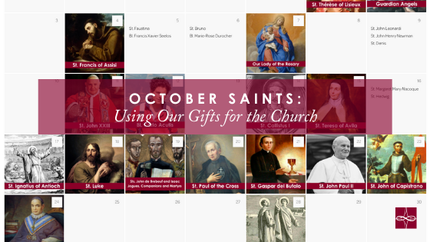

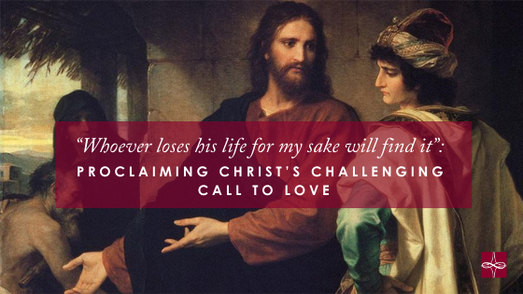

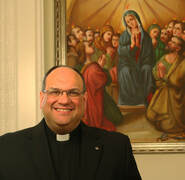
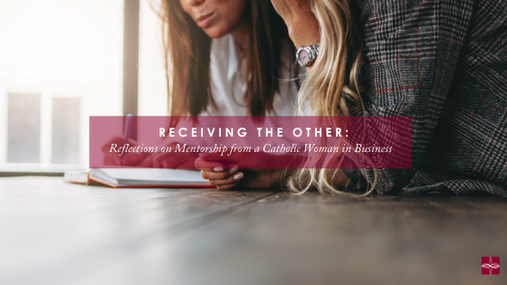

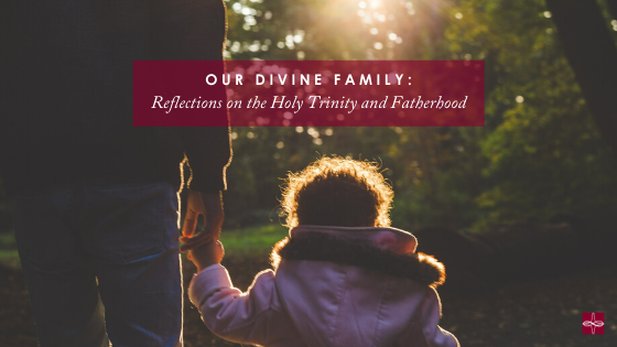



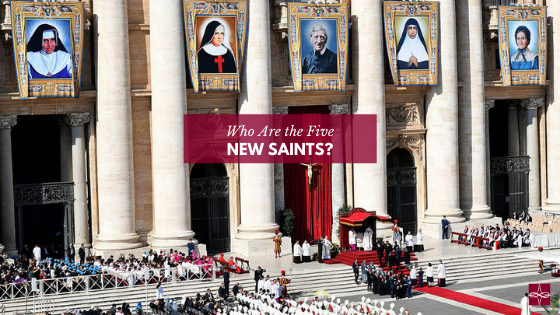

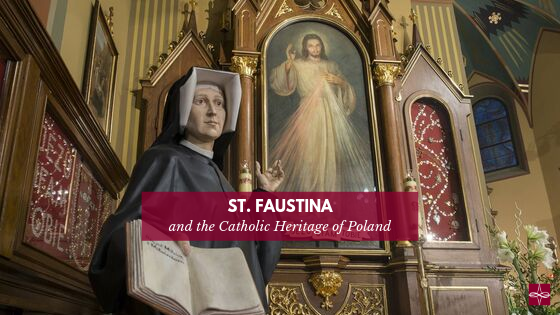

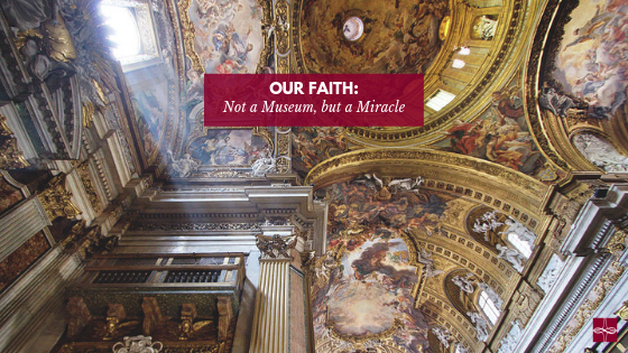

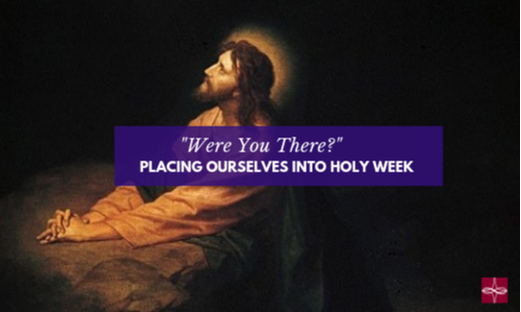

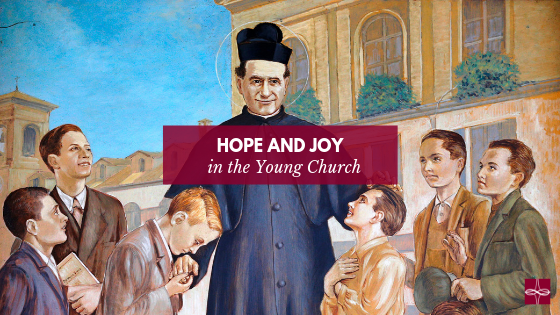



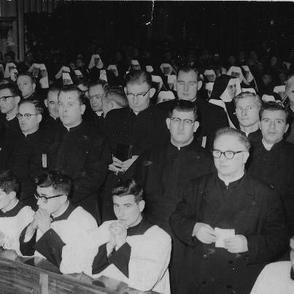
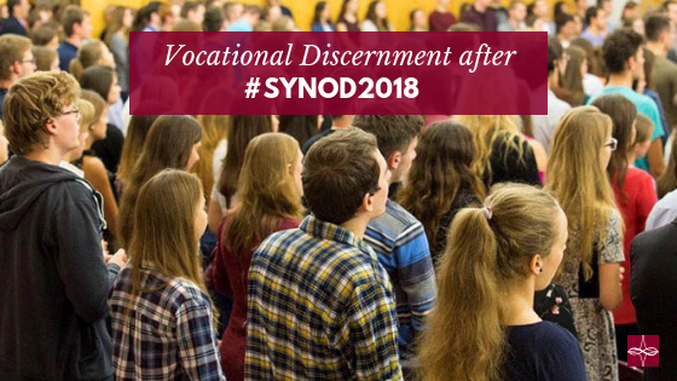
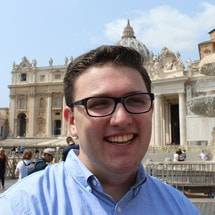
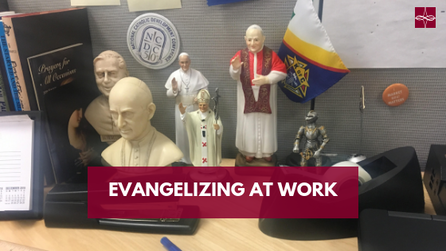

 RSS Feed
RSS Feed